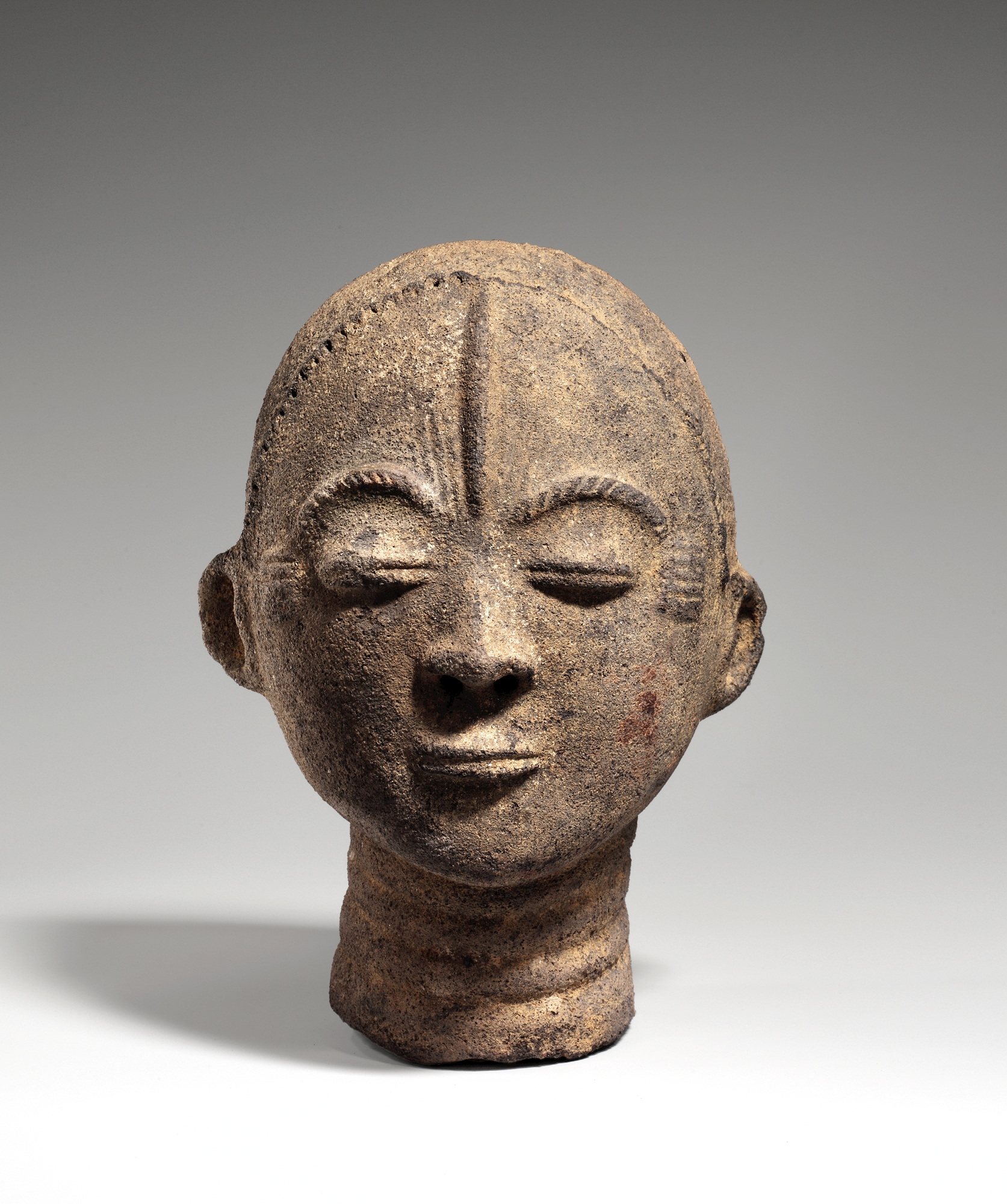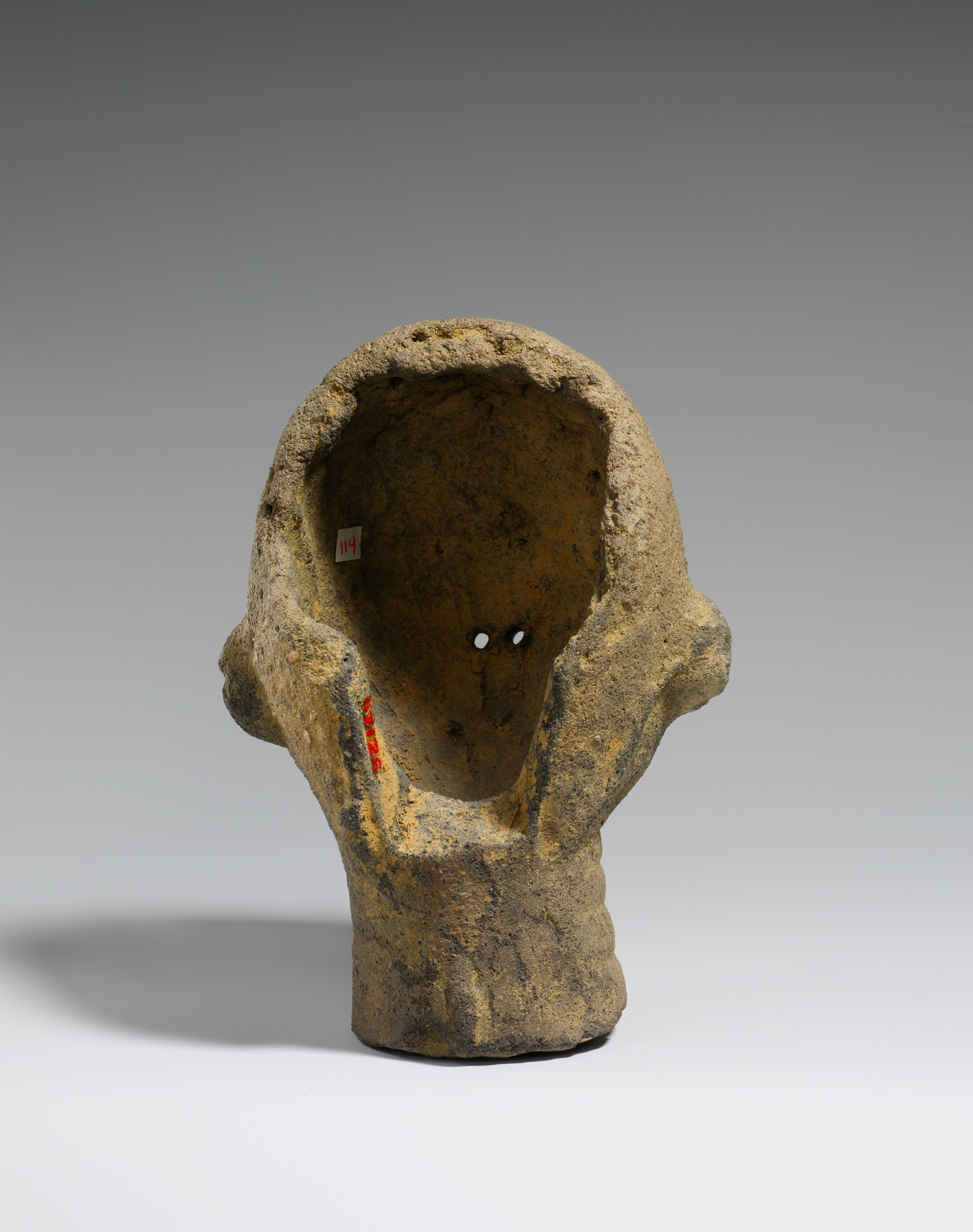Memorial Head (Nsodie)
Not on view
This elegant terracotta head is a memorial portrait (nsodie) of an Akan ruler from present-day southern Ghana or southeastern Côte d'Ivoire. It is an idealized representation whose serene expression, well-balanced features, and striated neck suggest the positive qualities such rulers are expected to embody. Created posthumously, royal images like this one were placed with the portraits of previous rulers in sacred areas within the cemetery called asensie. Generally, each royal figure was accompanied by sculptures of courtiers and servants, perhaps to provide aid and comfort to the deceased in the afterlife. Together, they formed sculptural assemblages that honored and preserved the memory of these respected individuals and the chiefly lineages of which they were part. At certain times of the year, the asensie was the focus of prayers, libations, and other offerings that ensured the continuing support and protection of the ancestors.
Sculptures associated with this tradition, which dates to at least the seventeenth century, were produced in a wide variety of regional styles. Set on a spherical head, the sensitive mouth, aquiline nose, hooded eyes, and arching brows of this work are quite naturalistic in form. Other nsodie, however, have heads that are flattened or elongated, with highly stylized facial features. While the focus of this sculpture is limited to the head and neck, other memorial portraits are full- or half-figure representations.
In much of Africa, clay is an artistic medium primarily associated with women. European visitors to this region in the mid-nineteenth century documented a related Akan tradition of lifesize funerary sculpture crafted by female artists. Although earlier accounts did not identify the producers of these smaller memorial heads, it is probable that they were created by female sculptors as well.
Due to rights restrictions, this image cannot be enlarged, viewed at full screen, or downloaded.
This artwork is meant to be viewed from right to left. Scroll left to view more.






